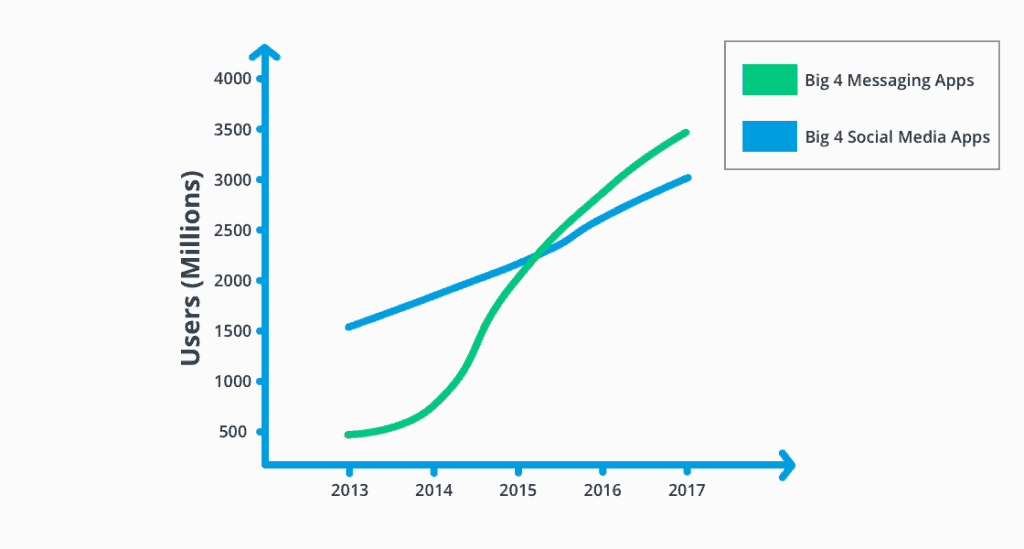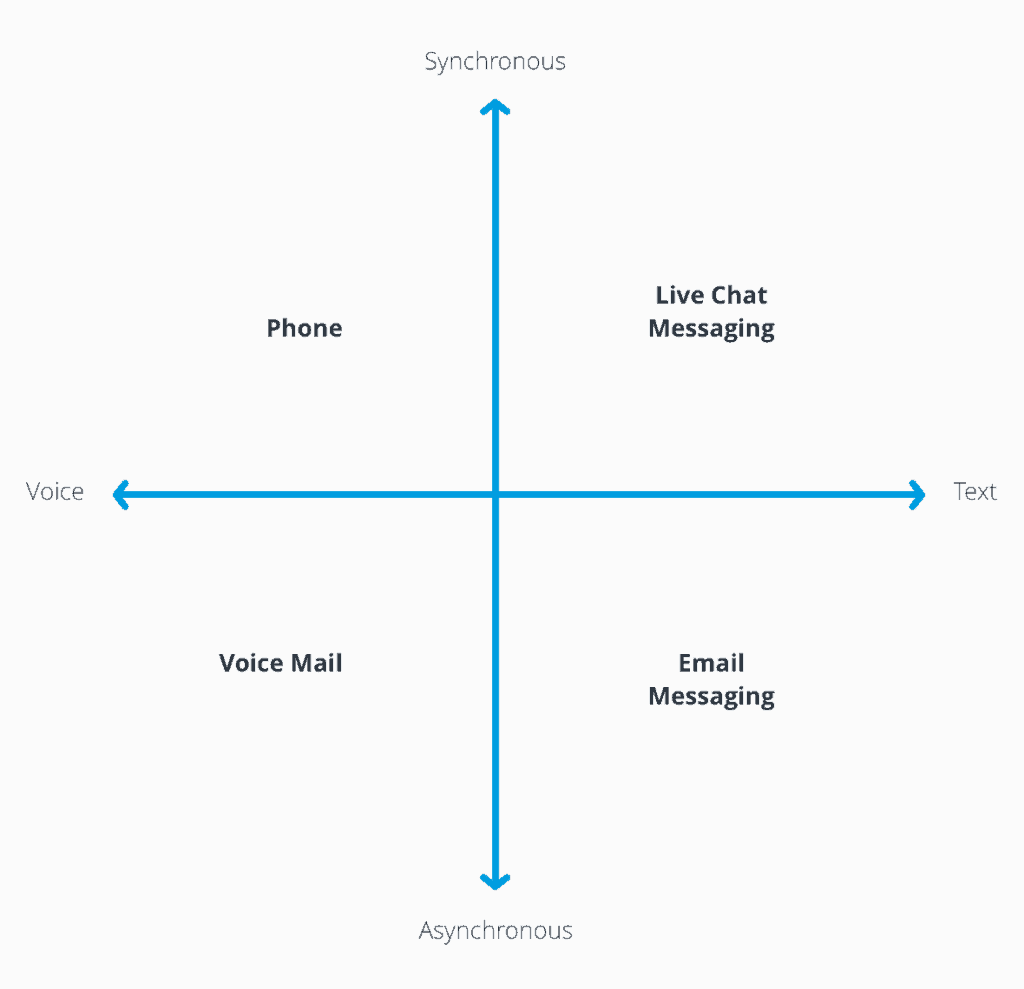
Pascal van Opzeeland, chief marketing officer, Userlike
How long has it been since you’ve last checked your phone’s messages?
If your mobile behavior is anywhere close to the average, that won’t be more than a few minutes. Worldwide, users of apps like WhatsApp, Facebook, and WeChat are spending 50 to 200 minutes with them per week.
Already in 2015, global usage of the four largest messaging apps had outgrown that of the four largest social media apps. There’s a huge potential for online retailers to offer customer support over these messaging apps.

Sources: Business Insider, Statista
Some major companies are already actively doing so. 1-800 Flowers, for example, allows you to order your next bouquet via Facebook Messenger; KLM airways’ Messenger service allows you to manage your booking; H&M offers automated and tailored clothing advice via Kik.
Here’s why you should get started with messaging support as well.
The Unique Nature of Messaging
Let’s first take a closer look at what makes messaging communication so different from, say, phone and email.
High frequency of app usage. The fact that its users open their messaging apps many times per day means that having a presence there can keep your brand top of mind. Unlike phone or email, there’s practically no barrier to picking up a conversation again.
Asynchronous by default, synchronous when appropriate. Phone is synchronous – you consume the message as it is being produced. Email is asynchronous – you can consumer the message hours, days, or years after it’s been produced. Messaging is unique in that it can be both. When both your customer and support team are online, it’s synchronous; when one side isn’t, it’s asynchronous.

Conversation list. While emails or social media posts generally revolve on certain topics, messaging revolves around ongoing conversations. Your conversation list inside Messenger or WhatsApp isn’t a collection of different topics, but a collection of conversations.
These unique features can have a huge impact on your customer relationships:
- From Interaction to Relation
When you’re interacting with customers via messaging apps, you’ve established a direct and permanent connection. That, combined with the fact that your messaging conversations revolve around persons, not topics, makes messaging the ideal tool for building and maintaining customer relationships.
- Reduced service pressure
What exactly makes messaging so convenient? When you call someone, you need to wait for that person to pick up before you can share your message. With email, you can share your message right away, but you know it could take ages to get a response.
With messaging, however, you can send your message right away – knowing that it could turn into a live chat when your friend is online. But if he’s not, you know he’ll see the message soon enough due to the dozens of times the average person opens her messaging inbox.
That’s the power of messaging’s synchronous/asynchronous nature. What it means from a company perspective is that you can offer instant service, but customers won’t blame you if you don’t. You offer synchronous support when your human resources allow it, and asynchronous support when they don’t.
So you can offer better service with fewer service reps. Another cause for potentially reduced costs is the automation many of your customer interactions.
- Automated interactions
You’ve likely seen the term chatbot pass by more than once in the past months. The potential of chatbots to automate large chunks of your customer interactions is the true reason behind its hype.
Messaging platforms like Messenger, Kik, and WeChat offer extensive infrastructures that other companies can build chatbots on.
The earlier mentioned 1-800’s chatbot is a famous example. It’s a chatbot that takes your order through a standardized process. But if you prefer to talk to human support instead, the chatbot will quickly put you through.
- Cyborg support
The truth is that chatbots haven’t yet developed to a point at which they can interact with people the same way humans do. This will inevitably mean that your support quality drops as the inquiry’s complexity goes up.
A realistic in-between step from here to full fledged AI support is “cyborg support“. In this mode, customer interactions are still conducted by human support reps, but they’re given an unfair advantage by relying on machine learning sidekicks.
Imagine a question coming in. The robot support sidekick immediately runs it through the entire database of previously asked questions, provided answers, and resulting service ratings. Based on these sources he offers suggestions to your service rep, who can choose and adjust them, or ignore them and answer the old-school way.
- Transactions extending to messaging apps
Currently the mass of online transactions is conducted over websites, but if messaging adoption continues its current streak, that might very well change. Websites will probably not lose their importance any time soon, but they’ll likely play together with messaging apps.
This also means that transactions will happen over messaging channels as well. Uber is a leading example of the possibilities of in-app messenger purchases; you can order and pay for a ride from within Facebook Messenger. But Uber isn’t the only company entitled to this.
Although still in beta, Facebook offers a ‘Buy Button‘ that enables you to build a checkout experience in Messenger. By clicking on the button, a native checkout dialog opens within Messenger, enabling people to use their billing info stored within the app.
Whether chatbots will live up to their expectations remains to be seen. But the move to business-to-consumer messaging seems to be an unstoppable one – with too many benefits to ignore.
From their origins as purely private communication channels, the messaging platforms are still being developed into channels for B2C communication. But that hasn’t stopped the first companies from already messaging with their customers. Those who know how to harness messaging’s unique features will have an advantage over their competition.
Userlike provides software for website and messaging support.
Favorite